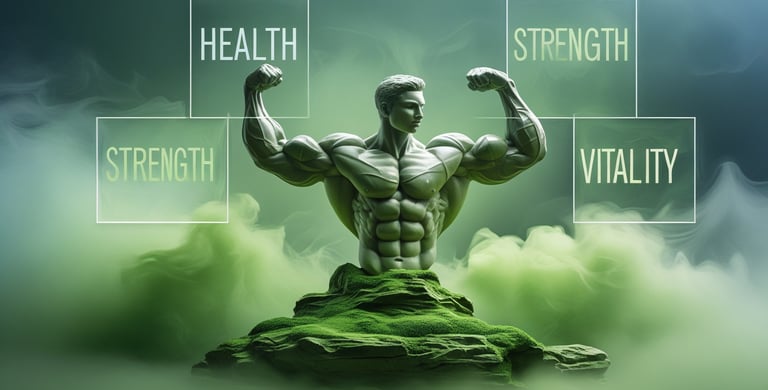Fascia Tissue and Your Nervous System
Fascia—the web of connective tissue that binds, supports, and interpenetrates muscles, bones, and organs—has long been dismissed as biological filler.
4FORTITUDEF - FITNESS, HEALTH, STRENGTH, VITALITY
Fascia Tissue and Your Nervous System
Fascia—the web of connective tissue that binds, supports, and interpenetrates muscles, bones, and organs—has long been dismissed as biological filler. But modern research reveals a startling truth: fascia is neurologically rich, dynamically responsive, and absolutely central to human strength, stability, pain, and emotion. It is not the muscle but the fascia that first tells the nervous system how to respond. That means if you’re neglecting fascia in your training, you’re not just missing out on performance gains—you’re ignoring the silent control system of your body.
The Forgotten Web: What Is Fascia?
Fascia is a three-dimensional matrix of collagen-based connective tissue. Unlike muscles, it doesn’t just contract and relax—it transmits force, senses pressure, holds trauma, and encodes proprioceptive information. It literally tells your brain where your body is in space.
Key Properties:
Proprioceptive Awareness: Fascia houses ten times more nerve endings than muscle tissue.
Tensile Strength: Transfers kinetic energy across joints and muscles.
Hydration-Dependent: Its function depends on fluid dynamics.
Emotional Encoding: Trauma and chronic stress manifest in fascial restriction.
This makes fascia the highway between physical movement and emotional regulation.
Neurofascia and the Hidden Nervous System
When fascia contracts or stiffens (often subconsciously), it can limit movement, create pain, or send distorted signals to the central nervous system. This is why:
Chronic tightness isn’t always muscular.
Emotional stress often manifests in shoulders, hips, or gut.
Injury risk skyrockets when fascia is dehydrated or undertrained.
Fascia influences the autonomic nervous system: your fight/flight/freeze responses. Gentle fascial release can shift the body into parasympathetic rest-and-digest mode faster than breathwork alone.
Fascia in Movement: Rewriting Performance and Strength
Traditional strength training assumes a muscle-joint model. But elite movement emerges from fascia:
Martial artists, gymnasts, and dancers utilize fascial recoil, elasticity, and tension balancing.
Speed and agility often depend on fascial elasticity, not just power.
Flexibility without fascial hydration is brittle and injury-prone.
Correct fascial training means:
Dynamic, multi-directional movement.
Myofascial release, rolling, and hydration protocols.
Eccentric loading and rebound-based patterns (e.g., plyometrics, spiral patterns).
Emotional Memory in the Body
Fascia stores memory, especially unresolved trauma. This is why many people experience emotional release during bodywork:
Tears during deep tissue massage.
Flashbacks or emotional clarity after myofascial unwinding.
The fascial system is our somatic conscience. Your body remembers what your mind tries to forget.
Neglect Has a Cost
Ignoring fascia creates long-term dysfunction:
Plateaued strength and mobility.
Chronic pain or tightness despite stretching.
Nervous system dysregulation.
Poor recovery and high inflammation.
Every rep, every step, and every breath is filtered through fascia. Yet most gym programs treat it as an afterthought.
Call to Action: Upgrade Your Fitness Paradigm
If you lead others in training, healing, or performance, understand this: fascia is not optional. It is central.
Immediate Actions:
Learn basic myofascial release.
Integrate hydration, spiraling movements, and rebound work.
Study fascia-focused systems: Anatomy Trains, MELT Method, or ELDOA.
Mastery begins not with more strength, but with smarter signal transmission. Fascia is how the body speaks to itself.
Wise Quote to End:
"The body is a system of systems. Train the glue, not just the gears." — Disciple of Wisdom


